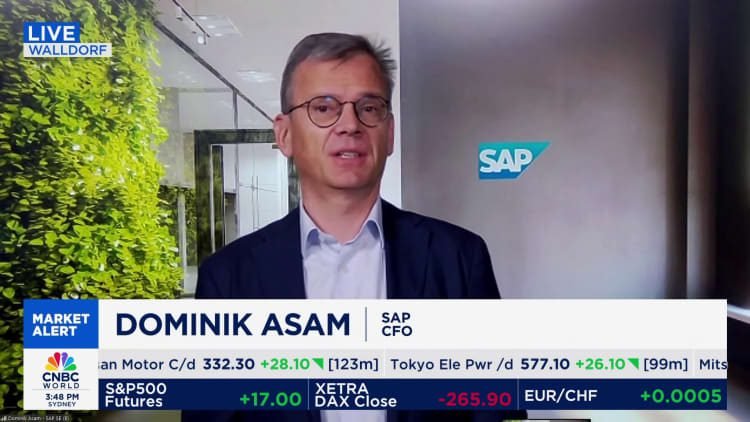SAP: Navigating Economic Challenges Amid Global Tensions
SAP, a leading software provider based in Germany, is currently facing hurdles due to evolving trade dynamics, notably in the U.S. market. Recent tensions surrounding tariffs have led to hesitations among its clients when making purchasing decisions. Despite the headwinds, the recently announced trade agreement between the U.S. and Japan has spurred cautious optimism within the company.
Impact of U.S. Tariff Uncertainties
As SAP’s Chief Financial Officer, Dominik Asam, pointed out in a recent interview, various sectors, particularly the public sector and major manufacturing industries, have felt the repercussions of these trade policy decisions. High-value transactions have been delayed, as approvals require more layers of scrutiny, leading to slower processes. This delay is primarily attributed to the overarching uncertainty related to tariffs and supply chains.
Asam noted that while deal-making hasn’t completely halted, the decision-making process has shifted, requiring more approvals from upper management. “The quicker this uncertainty is resolved, the more confident we become about our performance in the upcoming fiscal year,” he stated, hinting at a connection between market stability and operational efficiency.
Encouraging Developments with Japan
The recent trade agreement with Japan, which introduced a 15% tariff on exports to the U.S., has provided a glimmer of hope for SAP. This agreement could potentially stimulate market activity, allowing SAP to regain some of the momentum it has lost amid global trade tensions.
“The developments in Japan give us reason for optimism, although it remains early to draw definitive conclusions,” remarked Asam regarding the implications of this deal on SAP’s market strategies.
SAP’s Strong Financial Performance
Amid these challenges, SAP reported positive financial results for the second quarter, with revenues reaching €9.03 billion, a 9% increase from the previous year. This figure came in slightly shy of analyst expectations, but operating profit surpassed estimates. Despite caution regarding the current economic climate, SAP has maintained its full-year outlook for 2025.
CEO Christian Klein emphasized the company’s positive momentum, attributing it partially to increased national security spending in Europe, which has translated into substantial growth for defense-related stocks, several of which are SAP’s clients.
Cloud Services: The Core of SAP’s Strategy
SAP’s ongoing transition to cloud computing has become a pivotal focus for the company. With a substantial portion of its revenue now stemming from cloud services, SAP continues to explore how artificial intelligence can enhance its vast data offerings, particularly around finance, sales, and supply chain management.
In terms of cloud performance, SAP reported a robust 28% increase in its cloud backlog, a vital indicator of future growth. Despite challenges, analysts have noted that SAP’s commitment to innovation and customer experience has kept it competitive within a complex marketplace.
Market Reactions and Future Outlook
While many investors remain optimistic, not all reactions have been positive; some analysts have adjusted their stock price targets downward, expressing concerns about SAP’s adaptability amid external pressures. Meanwhile, fluctuations in currency rates have also posed challenges. The strength of the U.S. dollar and its role in SAP’s earnings complicates the outlook, especially as the company anticipates significant impacts on cloud revenue growth tied to exchange rates.
As SAP continues to navigate through these multifaceted challenges, its focus remains on leveraging technology to drive efficiencies and maintain strong client relationships, particularly as it moves forward in the ever-changing landscape of global business.
